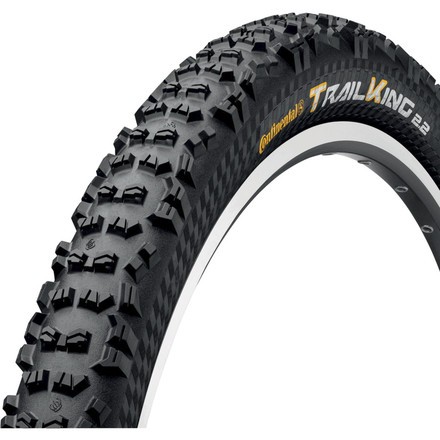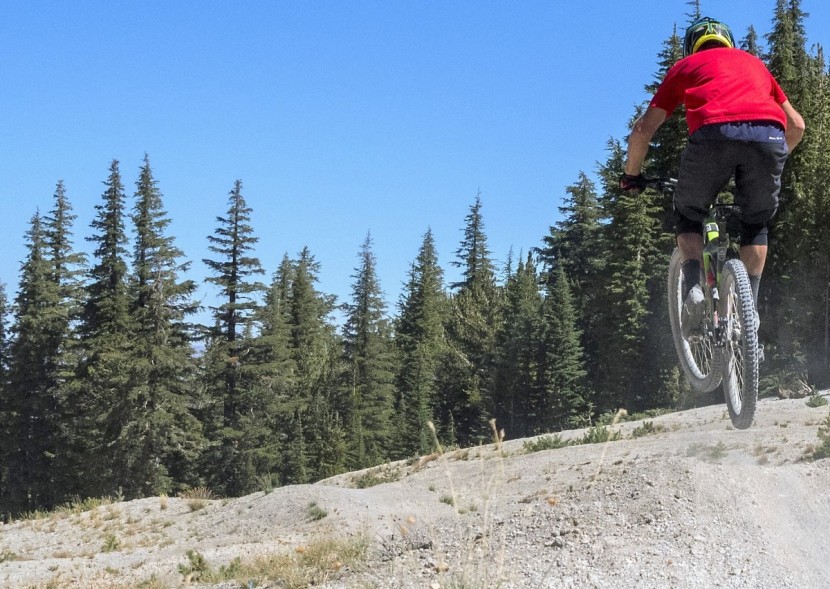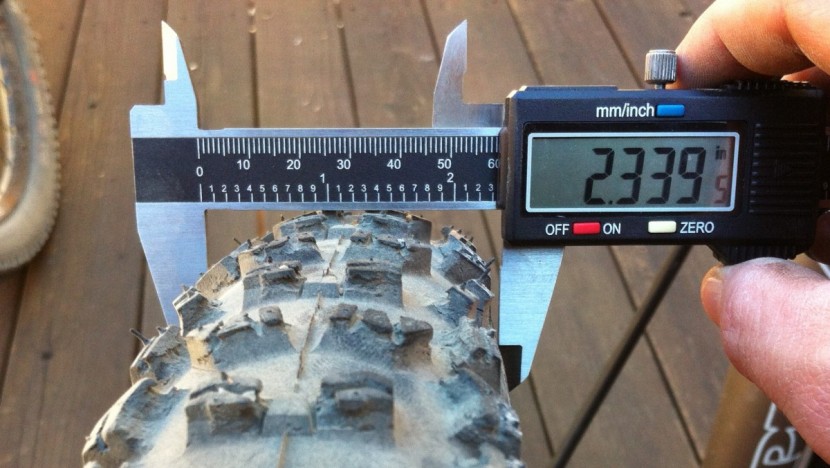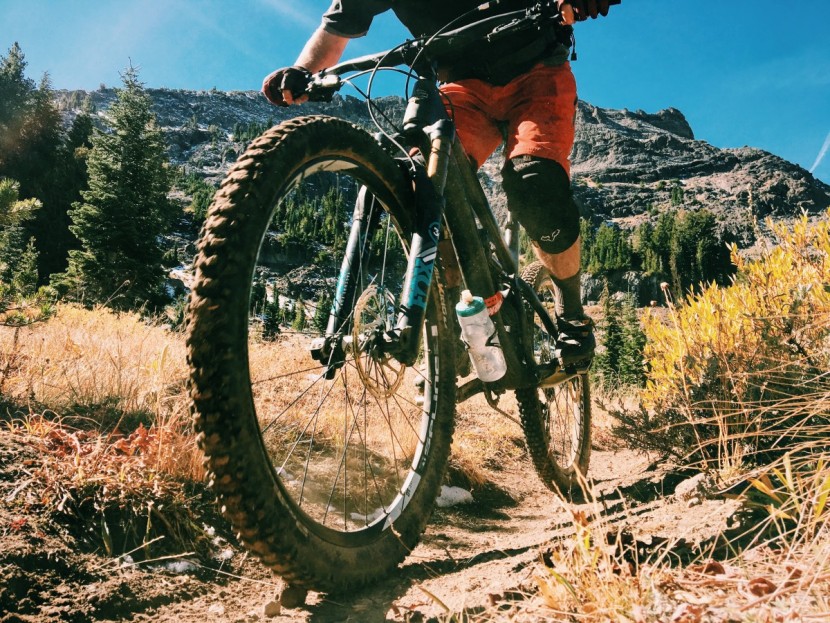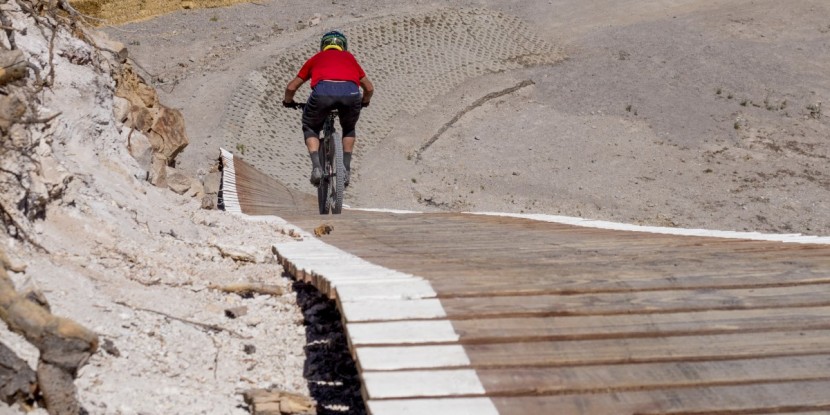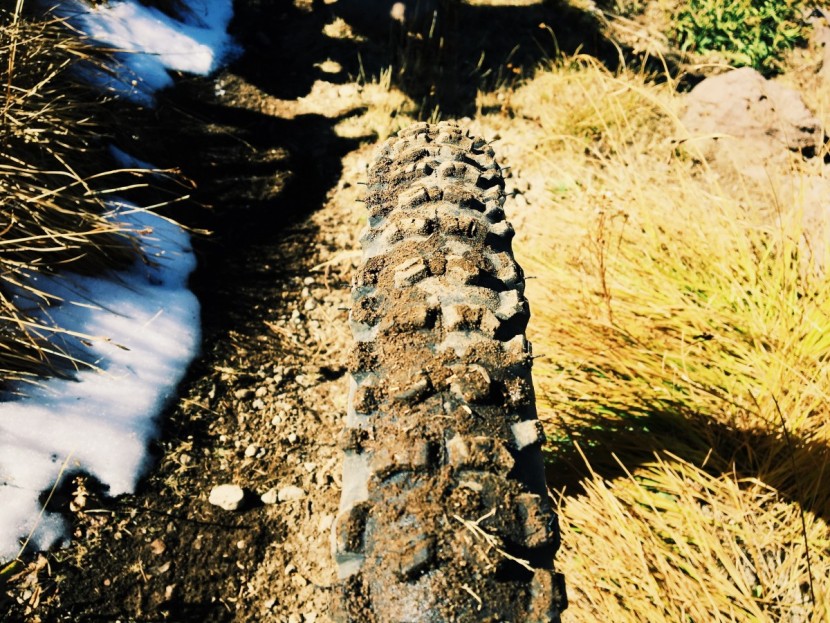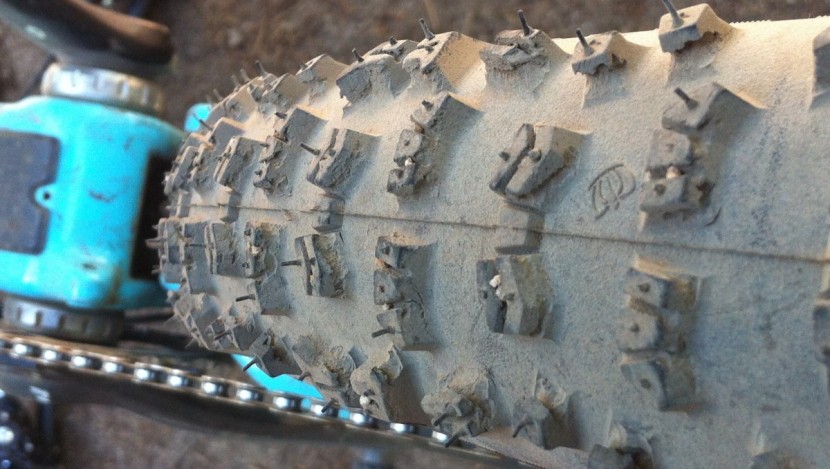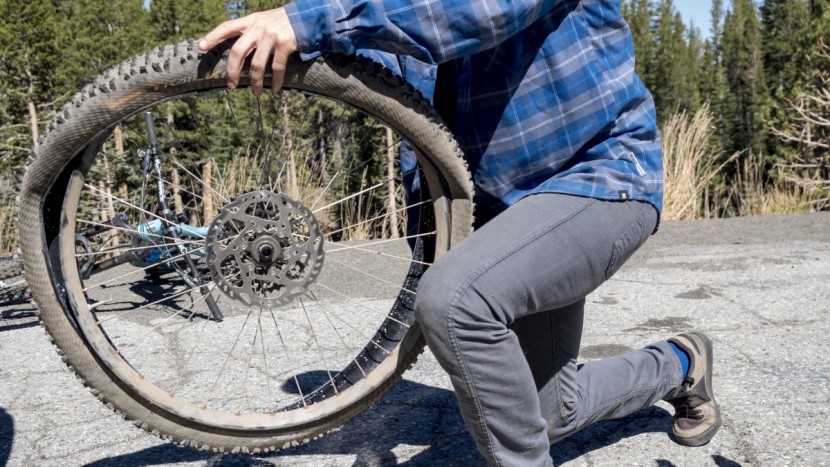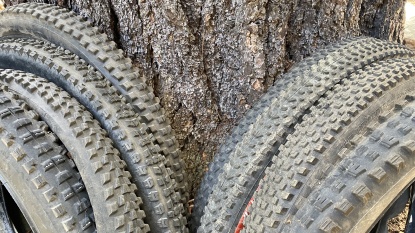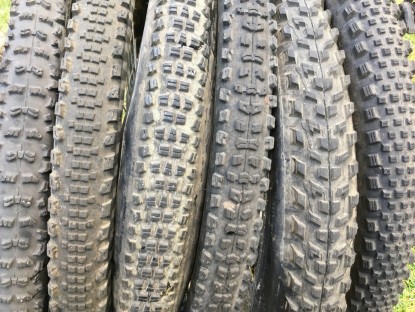Continental Trail King 2.2 Protection Review
Our Verdict
Our Analysis and Test Results
The Black Chili compound on this tire had us gripping where others were slipping. However, that tenacious grip seemed to outmatch both the casing and the tread. It wasn't long before knobs began to erode and peel en masse and the sidewall deformed so bulbously as to nearly rub the rear triangle on one tester's bike. Bantamweight climbing aficionados will rejoice in the fact that this tire offers “grip for days.” This tire was especially at home on raw, super technical ground, as it devoured rocks and roots alike.
Cornering
The larger side knobs are buttressed on the leading edges, which lends some support during cornering. These knobs are not terribly high profile and combined with the additional support from these buttresses, that feeling of the knobs “folding over” when really pressuring a turn was all but eliminated. Although the knobs remained well-grounded, and perhaps as a result of this, we could often feel this tire squirm underneath us during very hard cornering. This was especially evident when being run at lower pressures.
When negotiating over a technical, rocky spine, our lead tester's tire unseated, dealing his rim a fatal blow. Admittedly, we were running 26 psi at the time so the “I told you so” factor is pretty high here. The point we're making is that we experienced less support from the sidewalls and casing of these tires than we got from some others that allowed us to run our desired lower pressures without risking damaged equipment. When run as a front tire, we felt the tire had a very even feel.
When viewing the tire from above, there is no distinct channel between the center tread and the edge knobs like the Specialized Butcher or Maxxis Minion DHF. Rather, the tire has a very even look, similar to the Schwalbe Hans Dampf we tested. While the Hans Dampf has actual transitional knobs, the Trail King just uses a slightly wider center tread in alternating rows. We couldn't quite get the aggressive lean angles as other tires when tipping this tire on edge but it was good enough for government work. Instead of locking onto the shoulder knobs for cornering, this tire has a more “going, going, gone” feel, whereby the tire rolls smoothly from center to edge knobs until the angle becomes too great and it wants to slide out.
Reaching the breaking point is not easy though, as there's plenty of real estate to explore before traction breaks. This tire excelled on one of our local trails that features dozens of flat corners where tiny volcanic pebbly rocks sit on top of a semi-soft surface. Unless it has recently rained and things pack down on this particular trail, these unsupported corners always feel drifty and make maintaining speed rather difficult. This was the first tire that allowed us to track around the corners like the bike was on rails.
Pedal Traction
Incredible views abound in Lake Tahoe but they sure don't come easy. To view Big Blue from above the treetops, you'll be forced to conquer heart-pounding steep and loose climbs. The type of climbs that brings a metallic taste to your mouth and a colorful tinge to your spit. The recommended direction of rotation is printed on the sidewall and differs whether mounted on the front or rear. We recommend following this advice. When used as a rear tire, the knobs resemble the blade of a shovel and will pull more dirt under pedaling forces. The steeper side of the knobs are used to dig into the riding surface.
When used as a front tire in the recommended orientation, picture in your mind using the back end of that same shovel blade to smooth the surface of tilled dirt. The ramped side of the knobs becomes the leading edge. We took issue with the balloon-like casing and underwhelming sidewall support for cornering and longevity, but these attributes seemed to help the tire conform to trail obstacles rather well, which aided in slower speed pedaling and climbing traction. This was our a standout tire for this category that perhaps only the Maxxis Aggressor could compete with. Both these tires would be great options for the rider that values the up as much as the down.
Braking Traction
After testing some semi-slick tire designs like the Schwalbe Rock Razor and Specialized Slaughter, it was nice to ride a tire that actually halted the bike from continuing downhill with alacrity. With a more pronounced center tread, more than even the Maxxis Aggressor and WTB Trail Boss, the alternating rows of broad paddle-like knobs were effective at slowing things down when coming in hot to a corner. Braking was smooth and even, lacking any kick-out under braking forces while the bike transitions from tracking straight to leaning into a corner.
Rolling Resisitance
In softer conditions, any perceived increase in rolling resistance will certainly be made irrelevant by the increased traction this tire provides. Riders that spend most of their time on firm, hardpacked dirt may find this tire a bit of a drag, literally. Those riders should consider a semi-slick, like the Specialized Slaughter or Schwalbe Rock Razor. The Trail King is adept on loamy, wet, or soft and loose terrain. It even did a pretty decent job clearing mud, despite a relatively tight-packed tread.
Longevity
We were quite shocked when after 25 miles, this tire looked like it had been to Hell and back. The small side knobs were beginning to tear away. They looked as if the rubber had been undermined, as the base of the knobs seemed to have been eaten away in a C-shaped manner along the medial aspect of the knobs. Additionally, some knobs had suffered slices and were missing chunks of material. Other knobs dangled by a thread, resembling a young child about to lose a tooth. Granted, the couple of rides we took these tires on prior to noticing the excessive wear were quite rocky. However, the other tires in the test were subjected to the harshness of the same trails and were nowhere near as beat up.
We began to suspect we may have gotten a “lemon” after inspecting the same tire on a couple of friends' bikes that easily had 10x the mileage as our test tire. Neither of their Trail Kings seemed to show the same signs of wear as ours despite being the same model and rubber compound. On a rocky slab corner, one of our testers assumed he unseated his tire when a shotgun blast of air emanated from his rear wheel. After re-seating the bead with a CO2 cartridge, he gave the wheel a spin and it had a very pronounced wobble. Upon further inspection, the rim was surprisingly true. However, the sidewall of the tire had been permanently deformed and bubbled out.
Installation
The sidewalls on this tire have a stiff and plasticky feeling. When unfolding after purchase, the tire doesn't just fall into place quite as easily as other tires we tested. The bead maintained a crease in it for quite some time and we elected to sit our tire in the sun on the lawn in hopes it would settle down. A half hour or so in direct summer sun and the bead became more uniformly round. Despite the odd feeling of this tire, our Topeak Joe Blow Booster set the bead on the first try. Installation in colder temps was a much more difficult task. When cold, say 50 degrees Fahrenheit, this tire felt even more uniquely plastic and refused to seat on our wheel.
Best Applications
Even with our limited experience on this tire in wet and rooty conditions, we surmise our East Coast brethren would like it. The same might hold true for someone spending a majority of their time riding in moist, loamy conditions such as the Pacific Northwest. We truly thought this tire performed exceptionally well on the dry, technical climbs found in abundance here in Lake Tahoe. Unfortunately, insufficient sidewall support left us with a wonky, wobbly wheel on more than one occasion. Lighter riders should be fine, but Clydesdales or very aggressive riders might push the sidewall beyond its limits.
Value
Pretty average in terms of price at just about $70. It was our heavier, more aggressive tester that had repeated sidewall issues with this tire. We imagine a lighter or less aggressive rider would be less likely to overpower the casing. Our second try with this tire still produced undue wear of the same magnitude. We won't be seeking out a third strike. Although we warrantied our tire without any hassle, we detest any time spent unwillingly off our bikes.
Conclusion
A good all-rounder so long as your preferred terrain is more lamb than lion. A beefier sidewall could prevent the durability issues we experienced with our test tires, and make us feel more confident charging through rough rock gardens without fear of coming out the other side with damage to our wheels.


